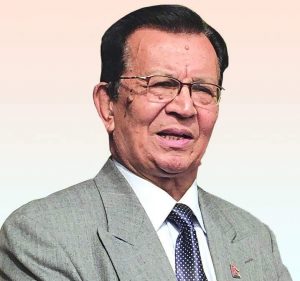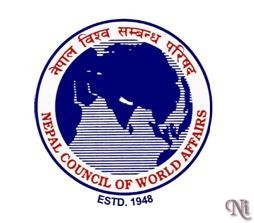
Introduction:
A boundary is a line that separates one country, state, or province from another. A Frontier line is the part or edge of a surface or area that forms its outer boundary. In other words, a border is a real or artificial line that separates geographic areas. At the same time, a border outlines the area that a particular governing body controls.
It can be viewed and treated more or less as a line of communication to be crossed back and forth as frequently as the socio-economic needs of the members of the affected local communities would require (Fatile, 2011). In other words, boundary and border is a synonymous terminology. However, according to the definition, the boundary is the line that indicates the outermost territorial limits of State sovereignty. A border means an area that adjoins the boundary line with a variable depth between one nation (or a political division) and another.
Diplomacy is the application of intelligence and tact in the conduct of official relations between the governments of independent states or, more briefly still, the conduct of business between states by peaceful means. At the same time, diplomacy is the management of international relations by negotiation, the method by which these relations are adjusted and managed by ambassadors and envoys, the business or art of the diplomatist, skill or address in the conduct of international intercourse and negotiations (Jonsson and Langhorne, 2004).
Border diplomacy involves administrative boundaries and border management system in terms of territorial integrity. Those demarcating the boundary lines; often grown out of rivers, mountain ranges, peaks, and narrow passes; govern our daily lives, and that’s doubly, so if, we live in the frontier area, near a neighboring country or state. Some boundaries are at some level unnatural, having homogeneous topography. In the same way, there might be some identical human behavior, food habit, and similar attire and language of both the frontier people. For example, driving around the Birganj town of Nepal and Raxaul of India makes this abundantly clear. The price of the daily consumable items and commodities maybe not be so different, as it can be difficult to tell which state you are in, India or Nepal, for the virgin visitors, and the small street of State Line Road does nothing to make it clearer since there is no conspicuous and eye-catching territorial demarcation on both the sides of the crossing point.
Diplomacy is highly related to the foreign policy of a country. In fact, Nepal’s foreign policy uses to be shaky time and often, especially when there are incidents between Nepal and India and Nepal and China. Similarly, it fluctuates in connection to the changing relationship between China and India. The most important thing is that border diplomacy has not yet been chalked down in Nepal’s foreign policy in the context of the nation’s territorial integrity.
Border diplomacy is the art and practice of conducting international boundaries negotiations between nations. It usually refers to international relations through the intercession of professional diplomats and experts with regard to issues of peace- making culture through mutual understanding. In addition, border diplomacy is the employment of tact to gain strategic advantage or to find mutually acceptable solutions to a common problem in relation to the historical and authentic documents and materials which are acceptable for both sides in a congenial atmosphere. At the same time, border diplomacy is an enterprise that necessitates an untiring supply of talented individuals with facts, figures, and past incidents to convey and convince neighboring boundary and surveying experts, in one or alternative way.
Nepal’s border diplomacy consists of two facets of the same coin. One is border demarcation diplomacy and the other face is border management diplomacy.
Diplomatic Aspect of Border Demarcation:
According to border demarcation diplomacy, first, the border between two nations shall be demarcated on a joint working basis with equal footing. Strip maps and GIS data concerning border business should be prepared and established jointly since the border is common to both nations. Second, boundary demarcation problems shall be resolved on the basis of friendship, brotherliness, mutual respect, understanding and reciprocity. Third, the border shall be demarcated on basis of old maps, documents, coordinates, and reference materials. Fourth, if there are differences in some segments of the borderline, that shall be settled with the formation of a joint technical-level committee and high-level joint commission with equal participation.
Fifth, Track-II diplomacy should be adopted to find out the modality, ways and means to make study and research for the amicable settlement of the problems.
Diplomats must prepare a solution paper on the basis of facts, figures and past incidents. They must keep in touch with the counterpart Track-II diplomats of the neighboring country to find out a solution, agreeable to both nations. Sixth, the content of the solution paper shall be discussed broadly on the political level and it should be passed by the majority with some amendments and addition, if necessary.
It shall be adopted as the ‘National Border Diplomacy or Policy’ of the nation.
This guideline policy matter should be adopted and spoken by all political party leaders, bureaucrats and technocrats with the counterpart personnel. Seventh, the Head of Government must talk to his counterpart of a neighboring country, on the basis of national border diplomacy to negotiate and solve the border demarcation problems. Eighth, if there is no way out even on the level of Head of Government, diplomatic tactics shall be taken to seek mediation diplomacy from the third country.
Both nations should be entrusted to the mediating country. Ninth, if the mediation diplomacy is not successful or entrusted, then the next step shall be to knock on the door of international institutions or organizations, such as the United Nations Security Council (Cartographic/Infrastructure Division). If it does not work, as the tenth and the last step, the state may go to the International Court of Justice to seek judgment on the issue of border business to protect the territorial integrity and to preserve national sovereignty.
Nepal-India Border Demarcation Diplomacy:
It is said that 97 percent of the Nepal-India border has been demarcated. 182 strip maps have been prepared and 8,553 border pillars and markers have been established. However, there are problems in the remaining three percent of the borderline. It means nearly 38 kilometers of borderline in various spots have not yet been demarcated, since there is a 1,880-kilometer-long border between Nepal and India. Within the spotted span of 38 kilometers, there are encroachments, disputes, claims, and counter-claims in more than 71 places, encompassing 60,662 hectares in area. The largest chunk of encroachment is the Lipulek-Kalapani- Limpiyadhura in Darchula district and its area is nearly 37,000 hectares. The second disputed/encroached area concerns 14,500 hectares in Susta, Nawalparasi district. Besides, there are disputes, claims, and counter-claims in other 69 places having 9,162 hectares of land. The smallest piece of encroachment is 240 square meters (nearly half a Ropani) of land, located at Phatak of Suryodaya Municipality Ward-3 Pashupatinagar area in Ilam district (Shrestha, 2019) These 3 percent (38 km) of unsettled spots should be handled as per the norms of border demarcation diplomacy, as stated in above mentioned serial number one. A High-level Joint Commission, consisting of Track-II diplomats and intellectuals, should be formed to settle the outstanding issues.
Nepal-China Border Demarcation Diplomacy:
Boundary Protocol between Nepal and China should be renewed with an interval of near about ten years interval, since the demarcation was completed and the first Protocol was signed on January 20, 1963. In course of the renewal of the previous Protocol, borderline shall be supervised and monitored jointly and a report should be prepared. At the same time, damaged and missing border pillars and markers shall be repaired and established accordingly. Side by side, new strip maps should be prepared digitally on the basis of previous maps, adopting new technology, such as Global Positioning System (GPS) observations and establishment of Geoinformatics System (GS) data. The most important item is the India-Nepal- 122) China Tri-junction Points (Zero Marker) which must be established on both ends of the borderline with the equal cooperation of both India and China.
Diplomatic Aspect of Border Management:
Border management diplomacy of Nepal should be adopted on the basis of dynamic equilibrium between both China and India. There is a quotation from the late King Prithvi Narayan Shah the Great ‘Nepal is a yam between two boulders (Acharya, 2061 B.S.). However, the situation has changed and has to be re-visualized in the changing context of not only Nepal but also China and India. Now it will not be an exaggeration to say that ‘Nepal should be a bridge between two boulders.
Nepal-China Border Management Diplomacy:
Nepal and China have a regulated border management system. However, Tibetans sneak illegally into Nepal. So border management should be strengthened from both sides. In this aspect, border out-post and immigration check-post shall be established close to the border crossing points as far as possible, not to allow anti- China activity from the Nepali soil. Presently, these posts have been located ten to twenty kilometers far from the borderline. For example, Lamabagar Police post at Dolakha district has been established 22 kilometers south of the border crossing point. In fact, it should be established at Lapche Gaun. There should be a policy to increase the number of border observation posts (BOP) of the Armed Police Force (APF) so that illegal Tibetan infiltration will be checked. It is relevant that Nepali timber, Himalayan herbs like expensive Yarsagamba of Nepal, and Red Sandalwood brought from India should be checked, not exported illegally to the Tibetan Autonomous Region of China, by densification and establishing BOPs close to border crossing points.
Nepal-India Border Management Diplomacy:
At present, there is an open border system between Nepal and India, but it has not worked well in the matter of security concerns for both countries. So it should be converted into a regulated system in mutual cooperation with the perspective of security for both nations. The policy shall be taken to regulate the border on a phase-wise basis. To start to be regulated the open border, the number of APF and BOP should be increased in the first phase. The BOP should be established close to the borderline, but not far from No-Man’s Land (Dasgaja Area). Presently, some of these posts have been located two to four kilometers towards the Nepal side. In the second phase, an identity card system should be introduced for travelers, who cross the international border. But the frontier inhabitants, who are residents within five kilometers of the border, should be permitted to cross the border many times a day. In the third phase, barbed-wire fencing should be erected on the border, but there must be 376 exit/entry crossing points, since the length of the borderline is 1,880 kilometers. It is high time to regulate the Nepal-India border to obstruct cross-border terrorism, criminal activities, and the smuggling of counter-fit Indian currency notes. A regulated system, in the land route, may be initiated with the joint decision as the regulated system was implemented in air-route with a joint decision after the hijacking of Indian aircraft from Nepal in December 1999.
Border Issue to be Resolved Diplomatically:
Nepal must be very clear on border diplomacy and boundary strategies to resolve the long outstanding chronic issues. The border diplomacy relating to the Nepal-India boundary may as follows:
• Nepal must nourish, insist, and present to India that Nepal and India are countries that have equal rights and status in the arena of an international forum, no matter how big or small the countries are.
• Attempts should be made to make them understand the problems in the higher level of the state.
• It has to convince India and obtain confidence from them.
• Nepal should be enabled to create a congenial atmosphere and environment for India for a ‘face-saving device’ in the international arena to realize the border problems, for example, the issue of Lipulek-Kalapani-Limpiyadhura.
• Lobbying must be made through the Nepal Embassies and Diplomatic Missions abroad to exert pressure via friendly countries of the world.
• Matured and experienced diplomatic medium should be conducted to convince
India.
• Track-II intellectuals should be mobilized to talk to their Indian counterparts to resolve the outstanding complex border issues.
• Root of the problems must be identified through consultations with the concerned experts.
• It must be identified the ways and means to solve the problems with alternative measures, which will be agreeable to both nations.
• After that stage, there must be dialogues and discussions among the political leaders in a manner of cordiality.
• At the end of rigorous inter-actions, political leaders must reach a consensus point that will be adopted as the national border diplomacy by all.
• If the border problems with the neighbor are not resolved mutually, problems should be briefed to the friendly countries of the world unofficially on a sideline during international meetings.
• Global pressure should be exerted on the southern neighbor of Nepal to solve the issues, through friendly countries directly or indirectly that could pay attention to India.
• If none of these measures work, Nepal must seek mediation through a third country.
• If the mediation is not accepted by India, Nepal must be ready to knock on the door of international organizations such as the United Nations (Security Council) and International Court of Justice (ICJ) for the protection of territorial integrity and sovereignty of the nation (Shrestha, 2022).
Border Strategy:
In connection to the complex issues like Kalapani border encroachment the border strategy be adopted by Nepal should be as follows:
• If India pleads that Kalapani belongs to them, what will be the strategy of Nepal?
• If India says that the late King Mahendra has given the area of Kalapani to India, how will Nepal encounter India?
 • In case India reiterates, China has never said that Kalapani belongs to Nepal; in
• In case India reiterates, China has never said that Kalapani belongs to Nepal; in
this situation, what will be the answer from Nepal?
• If India produces a proposal: Let us make the Kalapani area a Buffer Zone (No-man’s land), what logic should be presented to India from Nepal?
• Alternatively, if India proposes: Let us deploy military battalions jointly at
Kalapani area. what Nepal should do? Whether Nepal’s answer will be ‘yes’ or
‘no’?
• In the meantime, if India wants to take the Kalapani area on a lease for one
hundred years, what will be the strategy of Nepal?
• If India proposes mediation from a third country to resolve the Kalapani issue, which country will be acceptable for Nepal, and on what ground?
• Finally, if India warns Nepal: If Nepal pushes the Lipulek-Kalapani-Limpiyadhura issue into the international arena, Nepal must face the worst end result. What will be the strategy of Nepal?

The government of Nepal must be ever ready to answer all these queries, which may be raised by India during dialogue, discussion, and negotiation. Nepal must make theoretical and practical homework in an efficient manner.
Conclusion:
A study shall be made to know the feeling and intentions of the people of both frontiers, on the alternatives of the existing border management regime. The policy should be formulated according to their wish and need. If there are some chaos and irritants on the border, the frontier people will be the first and direct sufferer.
A policy of integrated border development projects (including physical, economic, and social development) in the frontier area should be formulated and implemented.
The border area is a sensitive element of a nation. If there are disturbances in the border area, inhabitants of both frontiers will suffer directly in the very first stroke.
Ultimately, it will affect the whole country. On the whole, shrewd, intelligent, tactful, and smart border diplomacy should be initiated to maintain the territorial integrity and sovereignty of the nation. On the background of all these factors, boundary issues should be settled through dialogue, discussion, respect for each other, reciprocity, and mutual understanding/negotiation diplomatically in a win-win situation once and for all so that there will be no grudge in the future.
References:
Acharya, B. (2061 B.S.). Dibya-Upadesh. Kathmandu: Shree Krishna Acharya.
Fatile, F. (2011). Management of Inter and Intra States Boundary Conflicts in Nigeria: An Empirical Approach. Dorrance Publishing Company.
Jonsson, C. & Langhorne, C. (2004). Diplomacy – Volume 1. London: SAGE Publication.
Shrestha, B. N. (2022). International Boundaries of Nepal. New Delhi: Nirala Publications.
Shrestha, B. N. (2019). Simanako Gyan. Kathmandu: Phoenix Book.
###############################################
# Text courtesy: Nepal Council of World Affairs (NCWA) Journal, 2023.
@telegraphnepal


